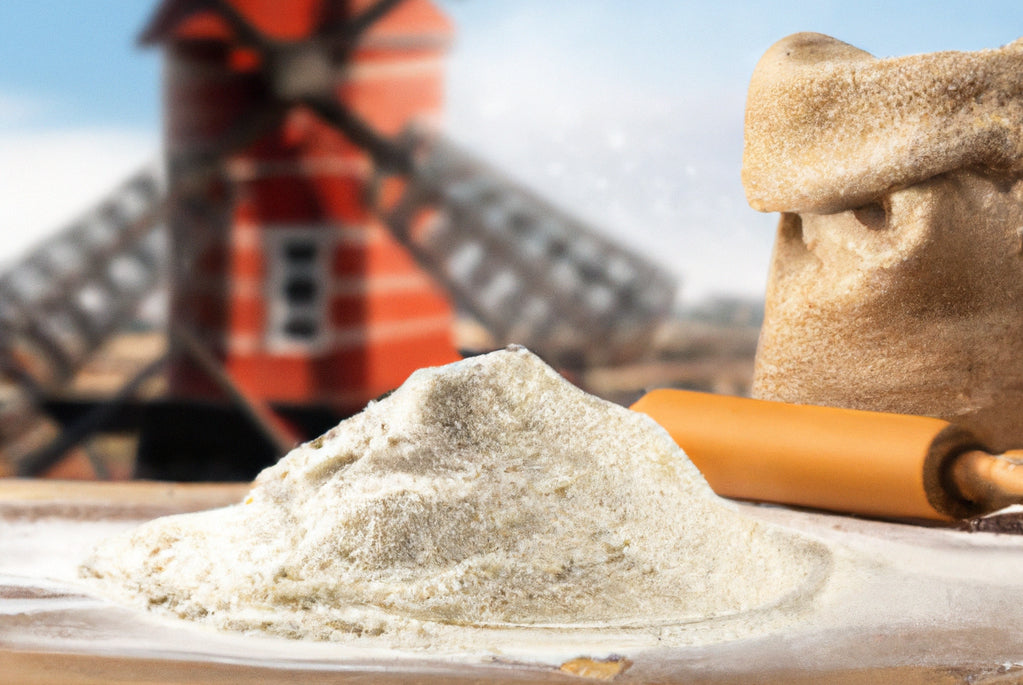
Flour and bread, a tight relationship
Share
Flour: A Fundamental Ingredient in Bread Baking
Flour is a fundamental ingredient in bread baking, providing structure and flavor to the finished product. There are many different types of flour to choose from, each with its own unique characteristics and uses in baking.
One of the most commonly used types of flour for bread baking is all-purpose flour, which is a blend of hard and soft wheat flours. This type of flour is suitable for a wide range of bread recipes, from sandwich bread to artisanal loaves. It has a moderate protein content, ranging from 9-12%, which makes it suitable for both soft and firm breads.
Bread flour is another popular choice for bread baking. It has a higher protein content, ranging from 12-14%, which gives bread made with bread flour a more chewy and elastic texture. This type of flour is ideal for hearth breads and other artisanal loaves that require a strong structure.
Whole wheat flour is made from the entire grain of wheat, including the bran and the germ. It has a higher fiber content and a stronger, nutty flavor compared to all-purpose or bread flour. Whole wheat flour is often used in combination with all-purpose or bread flour to add flavor and nutrition to bread. However, it can be more challenging to work with due to its lower gluten content, so it may require longer rising times or the addition of extra yeast or gluten to achieve the desired structure.
Other types of flour that are commonly used in bread baking include rye flour, which has a distinctive flavor and is often used in rye bread; spelt flour, which is an ancient grain with a nutty flavor and a slightly higher protein content than all-purpose flour; and oat flour, which has a unique flavor and can be used in combination with other flours to add nutrition and flavor to bread.
The Impact of Milling on Bread Baking
In addition to the type of flour, the way in which the flour is milled can also have an impact on the finished bread. Stone-ground flour is made by grinding the wheat between two stones, which can result in a coarser, more uneven texture. Roller-milled flour, on the other hand, is made by crushing the grain between rollers, which results in a finer, more uniform texture. Both types of flour can be used in bread baking, but the coarser texture of stone-ground flour may require longer rising times or the addition of extra yeast to achieve the desired structure.
The type of flour you choose for your bread baking will depend on the type of bread you are making, as well as your personal preferences. Experimenting with different types of flour can be a great way to add flavor and nutrition to your bread and create unique and satisfying loaves.
Farming for flour
Farming plays a significant role in the production and quality of flour. The process of growing wheat, the main ingredient in flour, is crucial to the final product.
The type of wheat grown, whether it be hard or soft, directly impacts the protein content and gluten development in the flour. Hard wheat, which has a higher protein content, is typically used for bread flour while soft wheat, with lower protein content, is used for pastry flour.
The farming practices used to grow the wheat also play a role in the quality of the flour. Conventional farming methods, which often involve the use of pesticides and chemical fertilizers, can negatively impact the health of the soil and the wheat grown in it. This can lead to lower quality flour with less nutrients.
On the other hand, organic farming methods prioritize the health of the soil and use natural methods to control pests and fertilize the crops. This results in flour that is not only higher in nutrients but also free of any chemical residues.
In addition to the type of wheat and farming practices, the location in which the wheat is grown can also affect the flavor and quality of the flour. Wheat grown in different regions can have unique characteristics due to the soil, climate, and other environmental factors.
by Flavio de Stefano